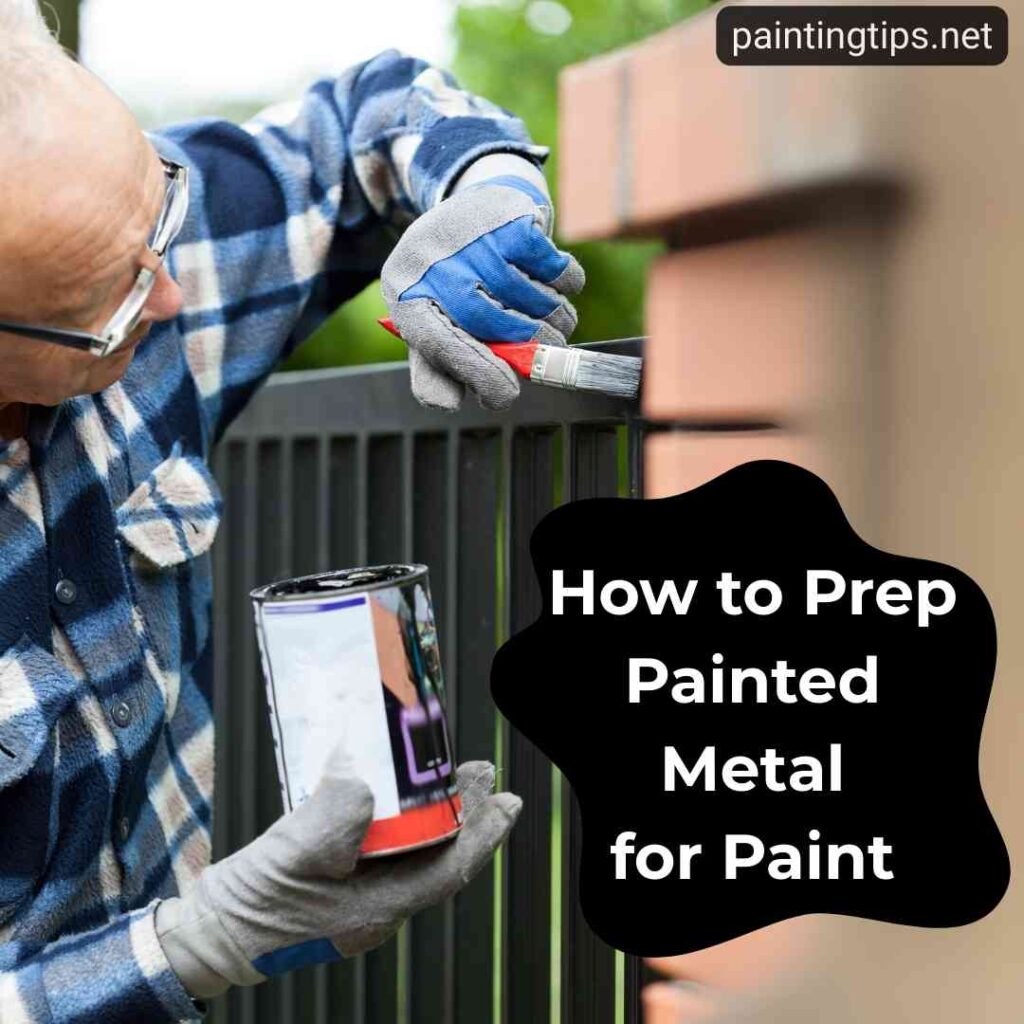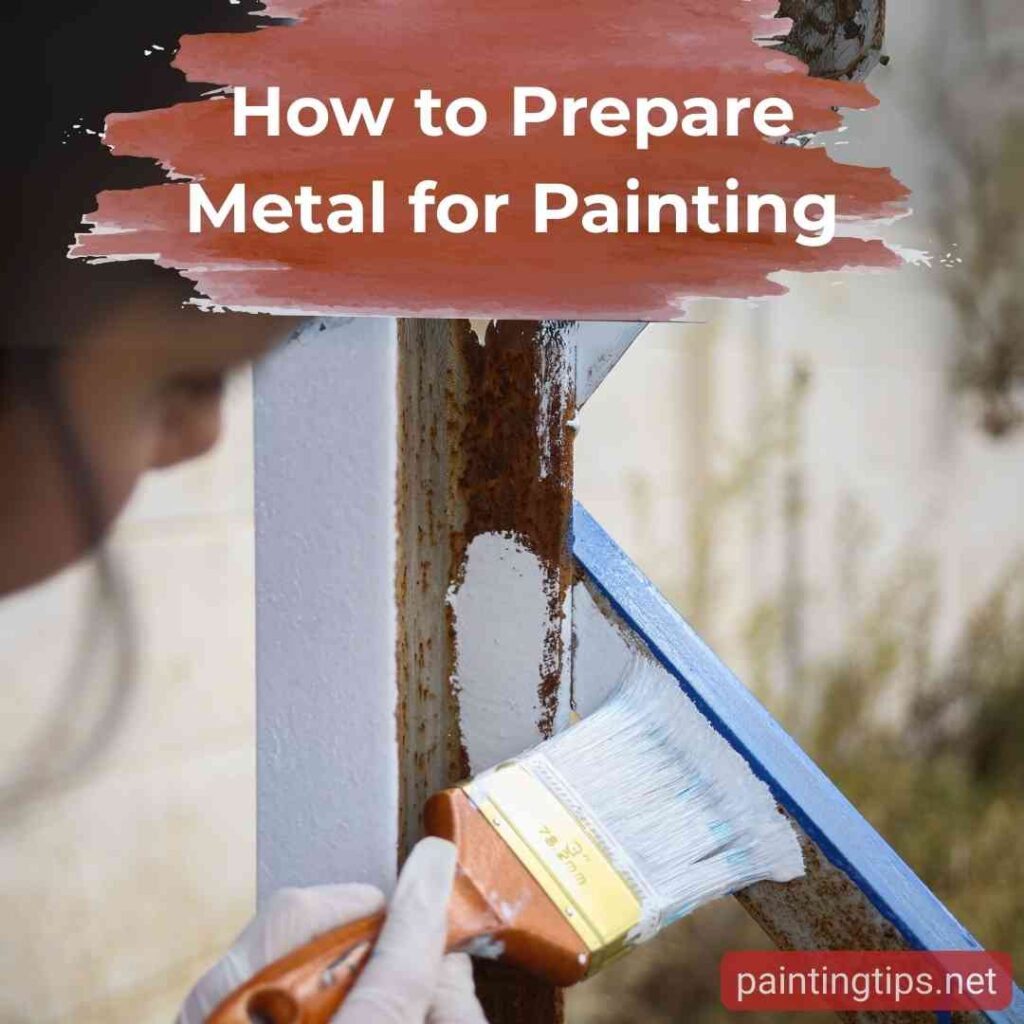Painting metal surfaces requires more than just grabbing a brush and paint. Whether the metal is rusty or has been previously painted, proper preparation is key to achieving a smooth, long-lasting finish. Without the right prep work, even the highest-quality paint can peel, chip, or fail to adhere properly. In this guide, we’ll walk you through the essential steps for prepping rusty and painted metal surfaces before applying a fresh coat of paint.
How to Prep Painted Metal for Paint

It might be tempting to paint metal without any prep work, but taking the time to properly prepare the surface will significantly increase the durability and lifespan of both the metal and its paint.
Surface preparation is critical to prevent the paint on metal from wearing off prematurely. Even previously painted metals often require prep before repainting. Especially if the old paint is peeling, surface preparation is necessary to ensure the new paint applies smoothly. Additionally, if the old paint left a glossy, slick finish on the metal, the new paint will have poor adhesion.
Another important factor before you start is to check the type of paint you plan to use. Avoid using nitrocellulose lacquer unless the previous paint is also a nitrocellulose lacquer. This type of paint can damage and cause other paint types to peel.
Also, if the existing paint on the metal is oil-based, it leaves a slick surface that prevents water-based metal paints from adhering properly. If you apply water-based paint over oil-based paint, it will likely peel in a short time.
How to Prepare Metal for Painting

In short, when repainting metal surfaces, it’s a good idea to use the same type of paint as the existing one.
So, what should you do if the metal surface is coated with acrylic paint, latex paint, oil-based paint, or cellulose paint — or if the metal is unpainted? Follow the detailed metal painting preparation steps below to learn the right way.
1-If the Metal Has Oil-Based Paint
If the previous paint is oil-based, repaint with another oil-based paint for better adhesion. For even better results, apply a synthetic primer before painting. If you paint over oil-based paint with a water-based product, it will peel off quickly. Also, applying nitrocellulose lacquer over oil-based paint can cause the oil-based paint to soften and break down.
If the metal has oil-based paint and you want to paint it with acrylic or latex paint, apply a bonding primer or transition primer at least 5 hours in advance.
2-If the Metal Was Previously Painted with Water-Based Latex Paint
If the surface was previously painted with water-based latex paint, you can either continue with water-based paint or switch to an oil-based paint. Water-based paints are easier to apply, but oil-based paints generally offer more durability on metal surfaces. “Related post: How to paint over latex paint.”
3-If the Metal Was Previously Painted with Acrylic Paint
If the metal was previously painted with acrylic paint, you can repaint it with either water-based or acrylic paints, or switch to an oil-based product. If the surface shows no signs of peeling, you can safely use water-based or oil-based paint — just avoid using nitrocellulose lacquer. “Related post: Acrylic paint over oil.”
4-If the Metal Was Previously Painted with Nitrocellulose Lacquer
If the surface was previously painted with nitrocellulose lacquer, you can repaint it with almost any type of paint without applying a primer first. Acrylic, latex, water-based, oil-based, and even polyurethane paints will work.
5-If the Metal Has Never Been Painted
If the metal is unpainted, make sure the surface is clean and dry. Fill any holes or cracks with a synthetic filler. Next, apply a rust-inhibiting primer (commonly called rust primer or metal primer).
If you’re using a water-based rust primer, let it dry for at least 5 hours. If it’s oil-based, allow 24 hours for proper drying.
Once the primer has dried, apply a water-based or oil-based metal paint. Wait at least 3 hours between coats for water-based paint, and 24 hours between coats for oil-based paint.
Another way to paint unpainted metal is to use nitrocellulose lacquer. This type of paint works very well on metal surfaces, offering excellent adhesion and fast drying times. It’s usually applied with a spray gun.
How to Paint Rusty Metal
- Remove Loose Rust: Use a wire brush, sandpaper, or a grinder to clean loose rust and dirt from the rusty metal surface. Wipe the metal with a damp cloth and let it dry completely.
- Apply Rust Converter (Optional): If some rust remains, apply a rust converter to treat the rusty metal and prevent further corrosion.
- Use a Rust-Inhibiting Primer: Apply a metal primer (anti-rust) to seal the rusty metal and create a strong base for painting. Let it dry fully before applying paint.
- Paint the Surface: Use acrylic, oil-based, or spray paint designed for metal surfaces. Apply 1–2 coats of metal paint, allowing proper drying time between each.
- Seal for Extra Protection (Optional): For outdoor metal items, apply a clear protective topcoat to extend the life of the paint and protect the metal from moisture and rust.